Multigrain Bread is packed with good for you whole grains, seeds and whole wheat with just a touch of sweetness. This whole grain bread recipe is for the beginning or advanced bread baker! This recipe is vegetarian or vegan.
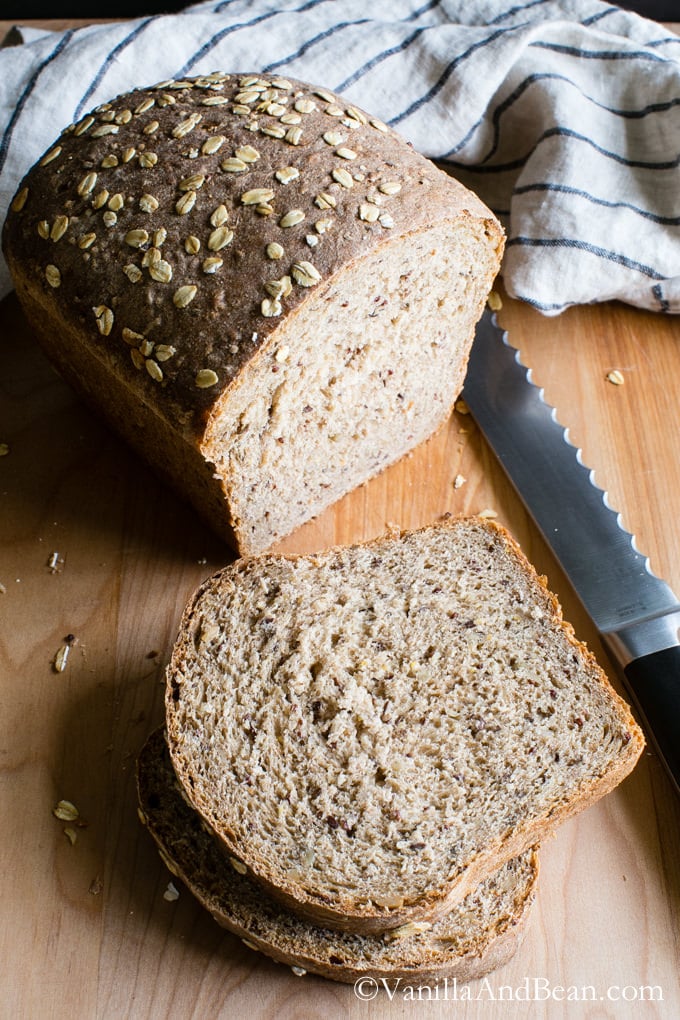
Table of Contents
The Satisfaction of Homemade Bread
Mmmmmm can you smell it?
Fresh-baked homemade, multigrain bread. I don’t do it often enough. But when I do, oh my goodness.
I just want to eat bread. All the time. Slathered with marmalade, blueberry jam… or pumpkin butter… or avocado… or, or….
I usually start the day with a green smoothie. But, when there’s fresh baked bread in the house, I have my green smoothie, and a slice. Or two.
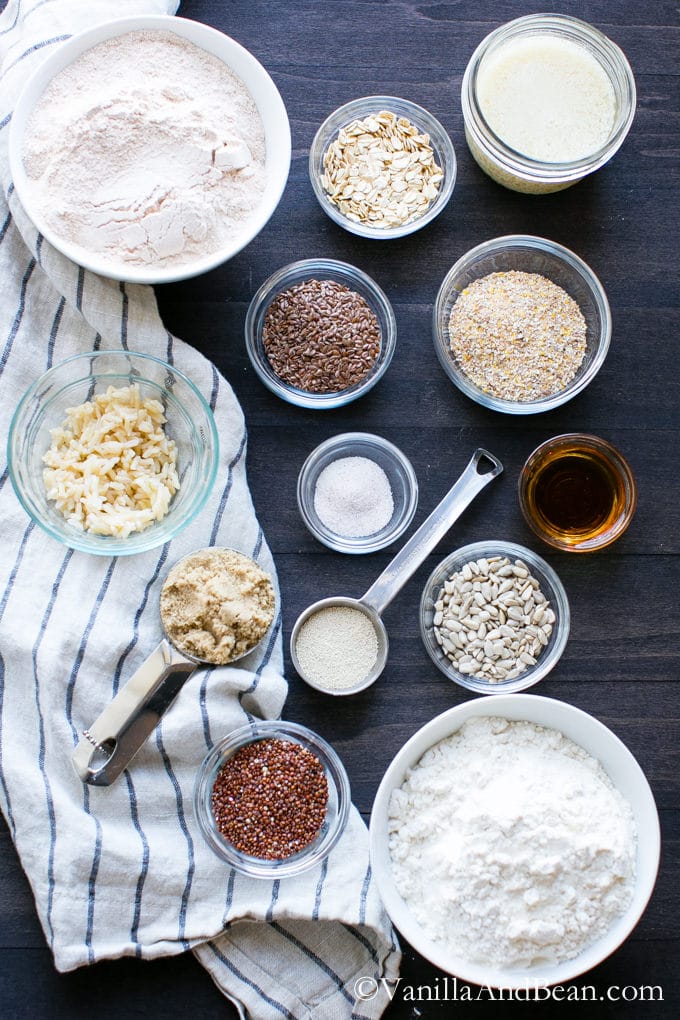
I’m a bread hound and am sort-of particular about it. I like bread to be firmer than not, yet with a soft texture, and have lots of seeds and grains. This whole grain bread is what I call a quicker bread, because it only takes a few hours to make and it’s made with a quick yeast rather than a sourdough starter.
What is Multigrain Bread Made Of?
Simple ingredients come together to make a fabulous, soft sandwich loaf. Here’s what you’ll need to make homemade multigrain bread:
- 10 Grain Cereal (see recipe notes for alternatives)
- Rolled Oats
- Quinoa
- Whole Flax Seed
- Sunflower Seeds
- Cooked Brown Rice
- Unbleached Bread Flour
- Whole Wheat Flour
- Plant or Dairy Milk
- Maple Syrup
- Quick Rise Yeast
- Salt
- Brown Sugar
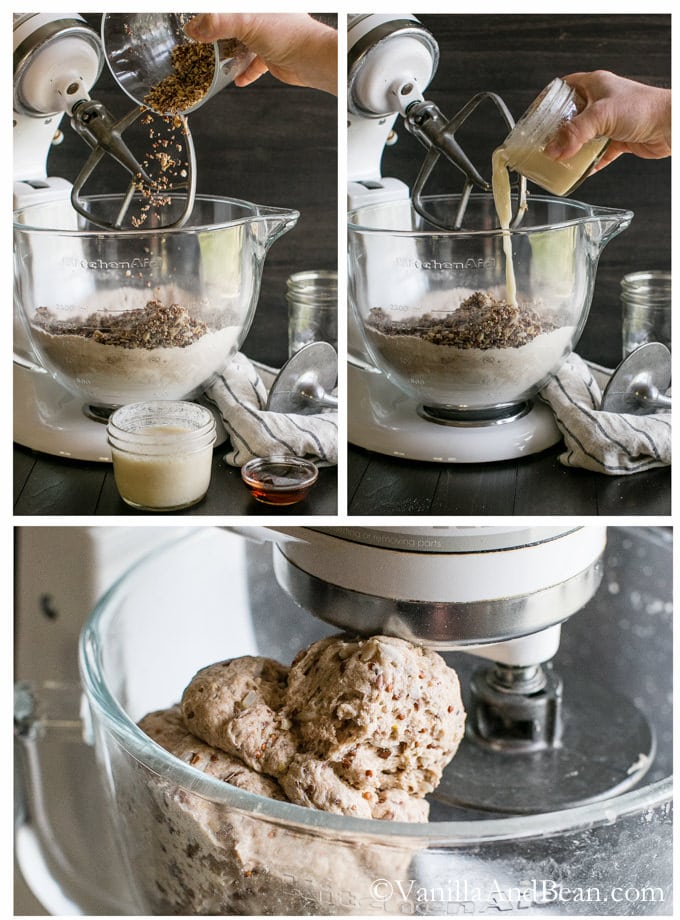
How to Make Multigrain Bread
Making yeast bread does require a bit of a time commitment. However, for this bread, hands on time is short while hands off time is much longer for fermentation, proofing and baking. I make this on a day I know I’ll be home for the morning or afternoon. Here’s how to make this multigrain bread recipe:
- First, make the soaker by placing the cereal, rolled oats, quinoa, flax, sunflower seeds and water into a small bowl. Leave out at room temperature overnight.
- The next day, mix the milk and apple cider vinegar in a small bowl. In a stand mixer, mix then knead the flour, brown sugar, salt, yeast and milk mixture. Add the soaker and brown rice and knead until all the ingredients are incorporated and the dough is tacky, not sticky.
- Next, allow the bread to rise in a lightly oiled bowl for about 90 minutes.
- Shape the dough then place in a lightly oiled pan. Rise again for about 90 minutes or until doubled in size.
- Last, bake the bread.
Allow the bread to cool completely before slicing into the loaf.
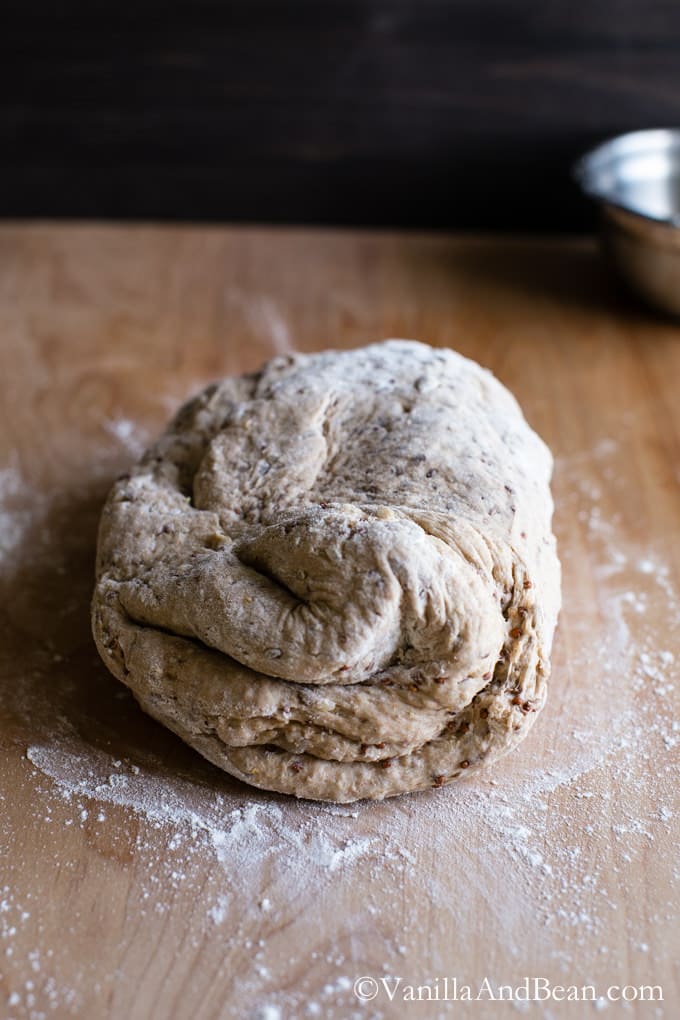
Recipe Development
I dinked around quite a bit with this whole grain bread recipe before deciding I was ready to share it. I changed the flour up a few times adding more whole wheat than white, made a loaf with way too many seeds and grains, then one with not enough and finally baked one far too long trying to achieve a darker crust. I also tried incorporating sesame seeds but their flavor was just too strong for this recipe.
We ate each loaf, but this is the loaf I saved for you and is my best multigrain bread recipe yet!
This bread is sturdy and makes an excellent vehicle for creamy condiments and crunchy veggies.
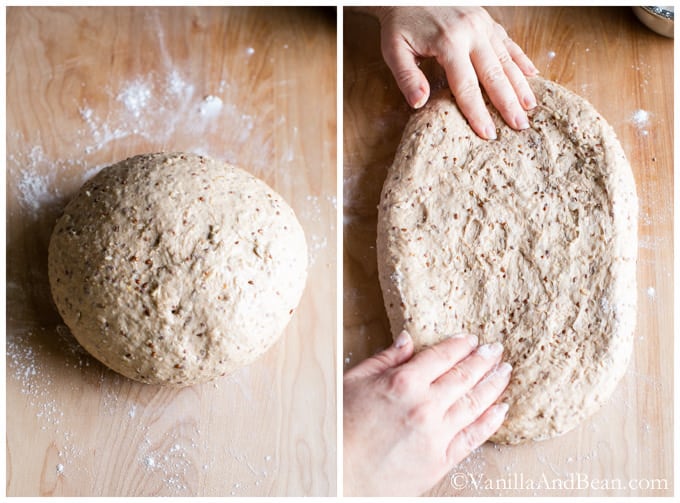
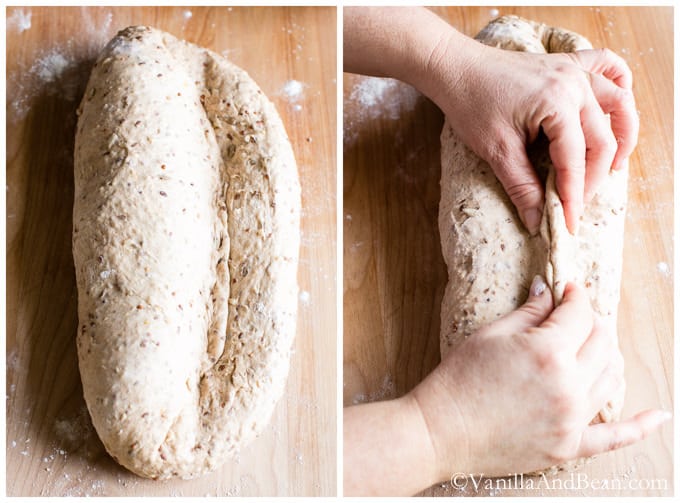
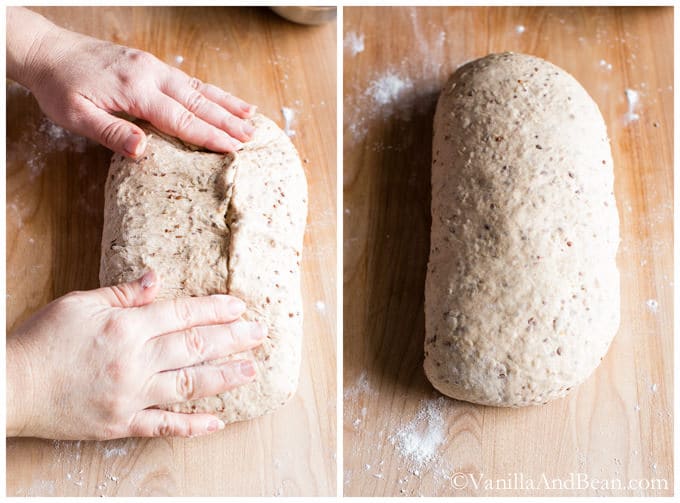
This homemade multigrain bread recipe had to pass the toast test. I think this is my favorite way to eat it, toasted, with the topping du jour. But this multigrain bread makes over-the-top delicious croutons for salads too.
If you’ve never made bread before, this loaf is a good introduction into bread making. It comes together with ease, and shaping it is quite forgiving.
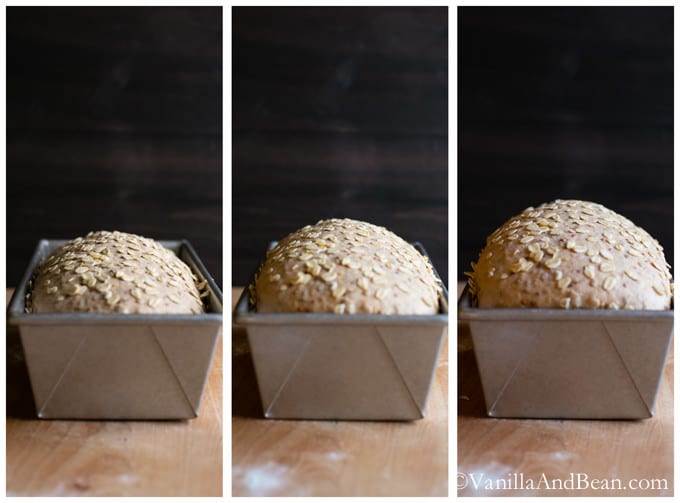
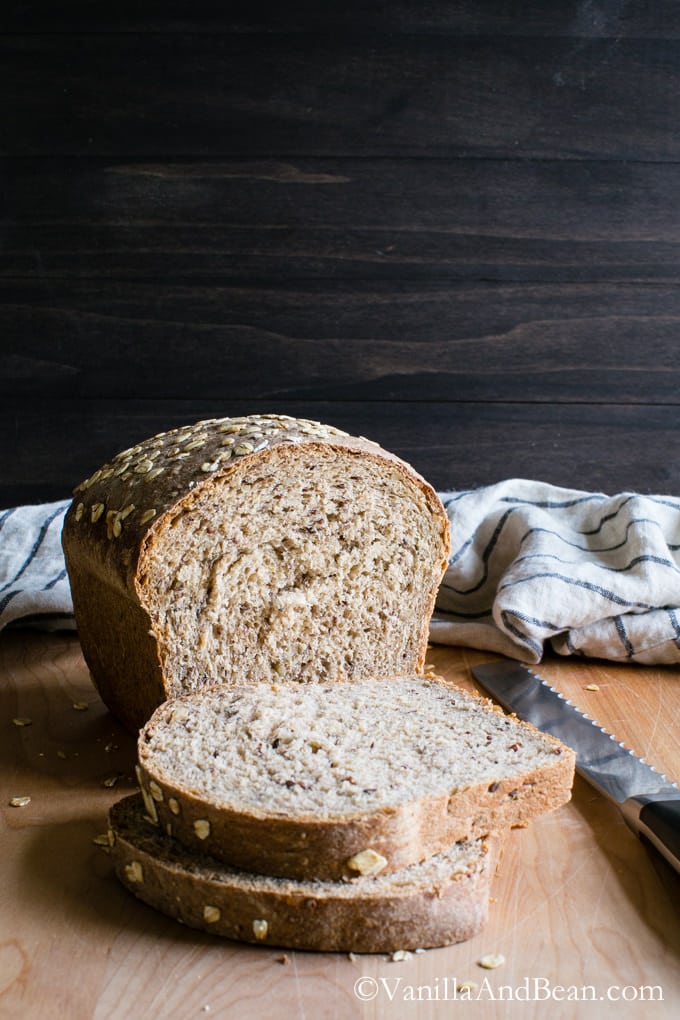
A Few Recipe Notes
- This homemade whole grain bread recipe calls for 10 grain cereal. If unavailable, polenta, millet, quinoa, amaranth or a combination of these grains can be used.
- Whole wheat bread flour can be challenging to find. I buy from a local miller. If whole wheat bread flour is unavailable this recipe will also work using whole wheat flour with similar results or all unbleached bread flour can be used. Texture and flavor will vary if using all unbleached bread flour.
- You’ll need a small amount of cooked short grain brown rice. I pull the amount needed from a batch when I’m making it for something else because trying to cook 3 tablespoons of rice is cumbersome. The rice can be frozen and thawed for use when ready to make bread.
- Multigrain bread can be made vegan or vegetarian. Simply use your favorite milk, nut or dairy in this recipe. I typically use almond or homemade cashew milk.
- Freezer friendly? Yes please! Slice the bread, then freeze in a freezer bag for up to two weeks. When you want a slice, you can pull it from the freezer and put it directly in the toaster.
Makers Notes
So happy to read y’all are enjoying the bread in the comments below. Keep those tips comin’! Here are a excerpts from the community:
- Tim used a bread machine to make this loaf. See his tips in the comments below the recipe card.
- Carolyn “used fennel seeds instead of flaxseed for a more savory flavor.”
- Pat said “use about 1/4 cup more flour to get the right consistency. Perfect for bread and awesome for buns.”
- Jeff said “I just finished baking this bread in a covered Dutch oven. It turned out fantastic. 450 degrees for 40 minutes then 10 with the lid off.”
- Susan said “I kneaded the dough by hand, and it was very easy to work with and rose beautifully. Besides tasting wonderful, this bread also freezes very well.”
More Bread Recipes to Love
- Sourdough Oat Sandwich Bread
- Seeded Multigrain Sourdough Bread
- Everyday Sourdough
- Yeasted Oatmeal Maple Bread
Homemade Multigrain Bread Recipe
Ingredients
For the Soaker:
- 1/4 C 10 Grain Cereal *See Note 40g
- 2 Tbs Thick Rolled Oats 18g
- 2 Tbs Quinoa 24g
- 2 Tbs Flax Seed 26g
- 2 Tbs Sunflower Seeds 22g
- 1/3 C Water 79g
For the Dough:
- 1/2 C Milk + 1 teaspoon apple cider vinegar 140g, use plant or whole milk, I use homemade cashew milk
- 1 1/2 C White Unbleached Bread Flour 264g
- 1 1/2 C Whole Wheat Bread Flour 258g **See Note
- 3 Tbs Brown Sugar 46g
- 1 1/2 tsp Sea Salt 10g
- 1 Tbs Quick Rise Yeast 6g ***See Note
- 3 Tbs Cooked Brown Rice 44g ****See Note
- 1 1/2 Tbs Maple Syrup
- 3/4 C Water room temperature 178g
For Finishing:
- Olive Oil for the bowl and pan
- 1 Tbs Rolled Oats 10g
- Bread flour for dusting
Instructions
For the Soaker:
- The day before making the bread, prepare the soaker by placing the cereal, rolled oats, quinoa, flax, sunflower seeds and water into a small bowl. It wont completely cover the grains, rather, just moisten them. Leave out at room temperature overnight.
For the Dough:
- Coat the inside of a large bowl and a 9x5" loaf pan with olive oil. Set aside.
- Mix the milk and apple cider vinegar together. Whisk vigorously. Set aside.
- In the bowl of a stand mixer with the paddle attachment, add both flours, sugar, salt, and yeast. Mix for 10 seconds. With the mixer off, add the soaker, brown rice, syrup, milk mixture, and water. Mix on speed 4 just until the dough comes together, and is hydrated. A chunky ball should form (if there's still some dry bits in the bottom of the mixer, add a tablespoon of water and mix just until a dough forms). Switch to the dough hook. Mix on speed 4 for 9-10 minutes, stopping occasionally to push the dough back down into the bowl. If the dough feels a bit too dry, add 1 tablespoon of water, if too wet, a few pinches of flour (don't worry, this dough is very forgiving).*If kneading by hand, knead for about 12-13 minutes on a lightly floured work surface.The dough is ready to remove from the mixer when it is more tacky, than sticky and registers 77-81 Fahrenheit (25-27 Celsius) on a thermometer (very important temperature). Finish the dough by kneading it on a lightly floured work surface for 1-2 minutes. Sprinkle with a bit of flour if needed.
- Tuck the dough into a ball making sure the surface is taught. Transfer the dough to the oiled bowl, rolling it around to coat it with oil. Cover the bowl with plastic wrap or moist doubled up tea towels.Set a timer for 90 minutes to allow the dough to ferment. It should double in size. If the dough is rising too fast, pop it in the fridge to cool it down for 10-15 minutes or set it in a cooler area of the house. It may take longer to rise, but we don't want it to rise too fast, as this is where flavor development occurs. The goal is not for it to rise in 90 minutes. The goal is for the dough to double in size. 90 minutes is only a guide.
- To shape the dough, remove the dough from the bowl and place it on a lightly floured work surface. Use the illustrations in the blog post as a guide to shape the dough. Press the dough into a rough rectangle about 3/4 inches thick, 6 inches wide and 8-10 inches long. Fold the dough lengthwise 2/3 over onto itself and crease it firmly using the pinky side of your hand. Fold the 1/3 piece left towards the crease and pinch the seam closed. Fold in the ends, coming in about an 1 inch and pinch the seam closed. Turn the bread over and rock it back and fourth a bit and gently fluff the ends in a bit. Gently place the loaf, seam side down into the prepared loaf pan. Lightly spray or brush with water and sprinkle 1 tablespoon of rolled oats over the top. Cover with plastic wrap or moistened doubled up tea towels. Set the timer for 90 minutes and proof until the dough nearly doubles in size. I've had this dough take longer and much shorter to rise than 90 minutes (It's also risen right on time before too!). The amount of time will vary depending on the temperature of its surroundings. Just keep an eye on it and look for it to almost double in size or rise about 1 1/4 inches above the lip of the pan at the center. *Tip: if the dough is sloooow, you can pop it into a turned off oven with the light on to speed this along.
- Preheat the oven to 350 Fahrenheit (176 Celsius) with the oven rack in the center. Bake for 20 minutes, rotate the pan and continue baking for another 30-40 minutes or until the bread reaches an internal temperature of 185 -190 Fahrenheit (85-87 Celsius), and is golden brown. Tent with foil if needed at about 30 minutes if the bread is getting too dark.
- Turn the bread out of the loaf pan and onto a cooling rack. Allow to cool completely, for a least 2 hours. If the bread is cut before it's cool it will be gummy inside.
- Store cut side down on a cutting board, for a few hours of storage. For longer storage, store in a plastic bag for up to 2 days. Freeze sliced in a freezer bag for up to two weeks. The bread can go from freezer to toaster, or thaw covered at room temperature.

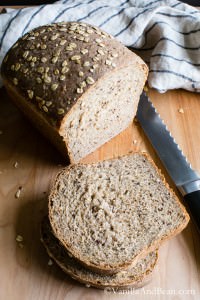
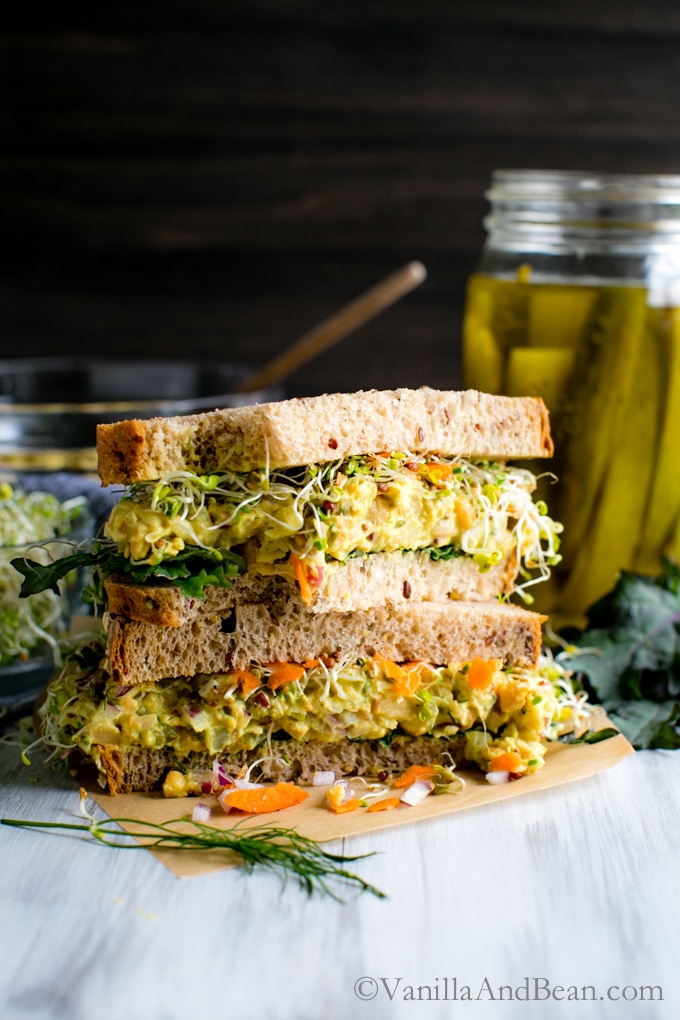
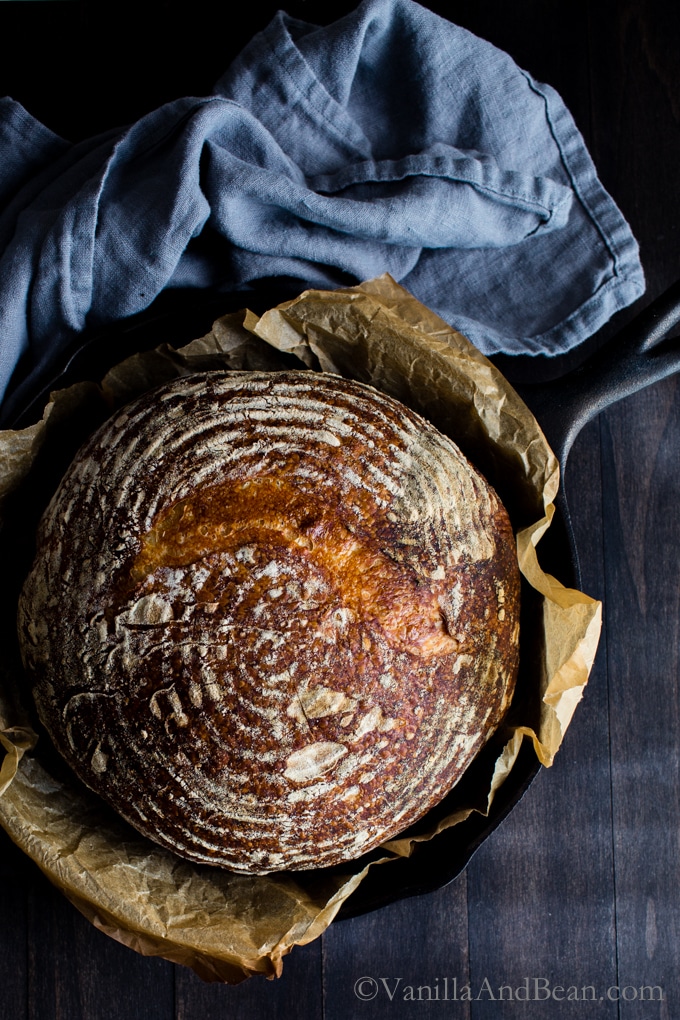
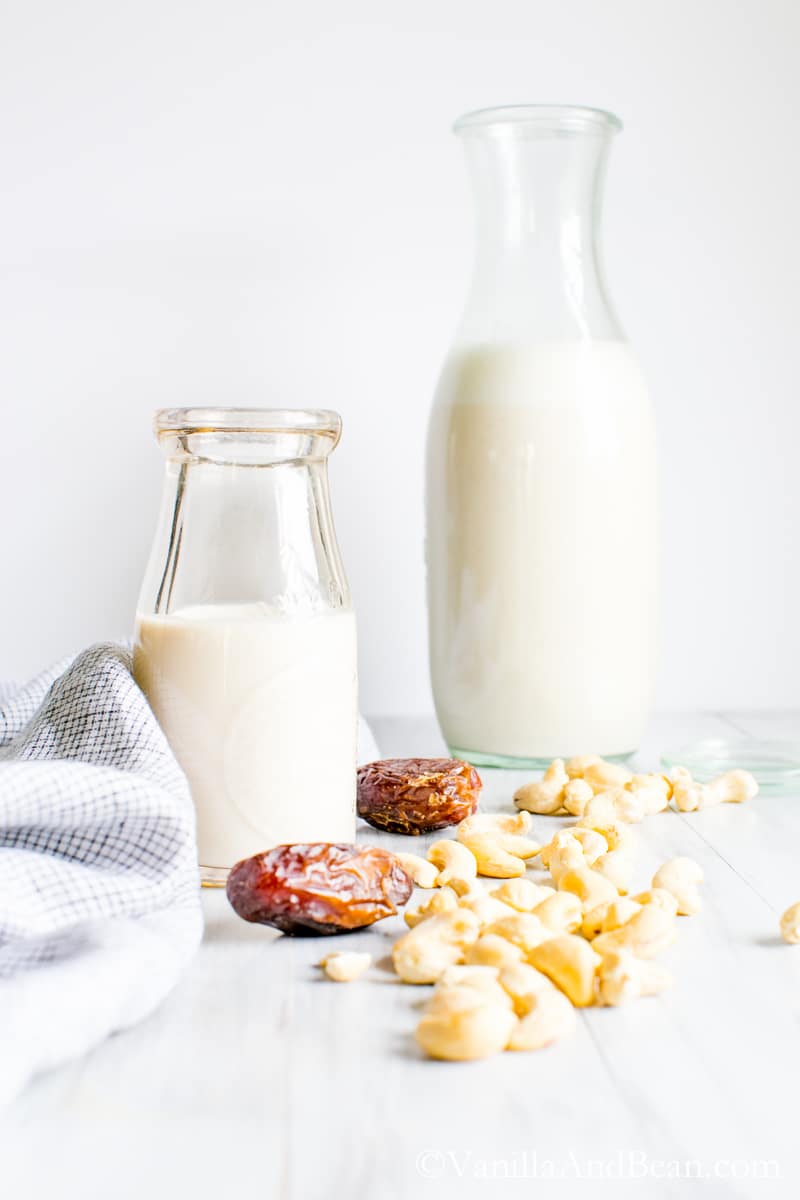
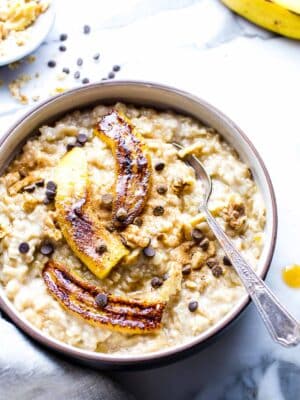
Turned out great! I used all purpose whole wheat flour for all 3 cups, and honey instead of maple syrup since that’s what I had. A great loaf. The instructions were perfect. Thanks! Next on to the sourdough!
Thank you for your note, tips on modifications and giving the bread a go, Georgianna! SO happy to hear you’re enjoying it!
SO GOOD! I made it yesterday with oatmeal and chopped pecans. Thanks for giving me the confidence to try these amazing recipes Sally!
Hooray! Thank you for your note and giving the recipe a go, Kenny! Oatmeal and chopped pecans sounds fabulous!
This is a wonderful bread! After making a few times I have a couple questions. Does the optimal dough temperature increase or decrease with kneading in the mixer? It seemed to increase with time which makes sense so perhaps checking the temp at 7 or 8 minutes would be good? Is there too little time in the mixer? I ended up putting the dough in the fridge for a few minutes because it began to rise pretty fast.
Hi Carolyn! Thank you for your note and giving the bread a go. This is a personal favorite of mine. The optimal dough temperature increases as the dough is mixed, so if stopping to measure the temp. before the time in the recipe indicates is a good practice. That is simply the time that that it took my bread, consistently to reach temperature. There is too little time in the mixer if the bread doesn’t reach temperature – so keep an eye on it. Also, the bread should be tacky not sticky. Good call on the refrigerator! I hope this helps. Please keep in touch!
Thanks Traci! The bread turned out well and I plan to check the temperature earlier next time. The differences in location, humidity and experience keeps things interesting. Happily, this time I got the timing of putting the loaf into the oven right. The simple things.
Hi! Can this recipe be successfully baked in a Pullman loaf pan?
Hi Eric… I’m afraid I’ve not made this recipe in a Pullman pan. What are the dimensions?
Hi! Thanks for getting back to me. It is 13” x 4” x 4” (using the lid).
Hi Eric! Thank you for the measurements. I’ve scoured the Interwebs and unfortunately I’m unable to find anything regarding this type of pan equivalent. Since I don’t have experience baking with a Pullman, I’m unable to say if it will work or not. I’m sorry I’m unable to help.
I appreciate you taking the time! If I give it a try…not sure that I will, I’ll let you know the result!
I still haven’t tried in the Pullman pan, but I want to reiterate what everyone else is saying here. Excellent bread and so happy to have found this recipe as every other multigrain I tried was not very tasty. Thank you for sharing it!!
Hi Eric! Thank you for your note. When I was finally able to make a decent loaf of all bread flour sourdough, this was the first recipe I started working on. I love it’s seedy bits and texture – you’ll almost always find slices in my freezer. SO happy others are enjoying it too! Keep us posted on that Pullman pan!
Hi!
I dont have brown rice- what can i use as substitute?
Thanks
Hi Bea! You can add 3Tbs more oats to the soaker! I hope this helps!
The bread came out so divine, the recipe is really good
Hi Diya! Thank you for your note. So happy to read you’re enjoying the bread!
Increasing the size to 16 servings was necessary to have some left for toast the next day. Overall an excelent loaf.
SO happy to hear Erika! Thank you for your note!
This recipe is awesome! I’m not much of a bread baker but I’ve had my moments of success (not to mention, failures! LOL), though I really wanted to hone this art of breadmaking. I do have most of the ingredients on hand except for the unbleached bread flour. Can all purpose flour be used instead of that? Thank you! I’ll surely have this on my to-do list when I have lots of time.
Hi Kareen! All purpose can be subbed but you’ll need to reduce the liquid in the recipe. By how much, I’m not exactly sure since I’ve not made this recipe with all purpose. Please keep in touch if you give it a go!
Thanks Traci, this is such a great recipe! I’ve been making this regularly for over a year and it’s definitely my favorite. One addition I’ve made is to add one to two teaspoons of nigella seeds (also known as kalongji or black onion seeds).
I’ve also found it works great in my bread machine. I use the delay start feature of the machine to let the soaker ingredients soak overnight and have the bread ready when I get up in the morning.
What I’ve found works for me is:
– start with a total of 14 ounces of water,
– add the soaker ingredients (except the oats and cereal which I add after the flour). I don’t often have cooked rice on hand so I usually substitute a couple of tablespoon of cracked wheat and add to the soaker as well.
– add 2 tbsps of dry milk powder, and the vinegar, sugars, and salt.
– add the flours, oats and 10 grain cereal
– add 1 to 2 tsps of nigella seeds
– add 2 tsps of bread machine yeast
– Set the machine to whole grain, 2 lb loaf, and delay the start so it’s ready in the morning
Hi Tim! This is so helpful! I’ve had others ask about making this recipe in a bread machine, so I’ll make a note of it. Thank you so much for sharing Tim, I’m thrilled to hear your enjoying this lovely loaf and appreciate your note!
Hi,
Can you use regular bread flour?
Hi Sally… do you mean for 100% of the flour in the recipe or just for the unbleached bread flour? You can sub it for unbleached, but the hydration may be off a bit if subbing for 100% of the recipe. By how much, I’m not sure because I’ve not tried it.